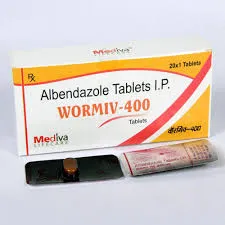- Afrikaans
- Albanian
- Amharic
- Arabic
- Armenian
- Azerbaijani
- Basque
- Belarusian
- Bengali
- Bosnian
- Bulgarian
- Catalan
- Cebuano
- Corsican
- Croatian
- Czech
- Danish
- Dutch
- English
- Esperanto
- Estonian
- Finnish
- French
- Frisian
- Galician
- Georgian
- German
- Greek
- Gujarati
- Haitian Creole
- hausa
- hawaiian
- Hebrew
- Hindi
- Miao
- Hungarian
- Icelandic
- igbo
- Indonesian
- irish
- Italian
- Japanese
- Javanese
- Kannada
- kazakh
- Khmer
- Rwandese
- Korean
- Kurdish
- Kyrgyz
- Lao
- Latin
- Latvian
- Lithuanian
- Luxembourgish
- Macedonian
- Malgashi
- Malay
- Malayalam
- Maltese
- Maori
- Marathi
- Mongolian
- Myanmar
- Nepali
- Norwegian
- Norwegian
- Occitan
- Pashto
- Persian
- Polish
- Portuguese
- Punjabi
- Romanian
- Russian
- Samoan
- Scottish Gaelic
- Serbian
- Sesotho
- Shona
- Sindhi
- Sinhala
- Slovak
- Slovenian
- Somali
- Spanish
- Sundanese
- Swahili
- Swedish
- Tagalog
- Tajik
- Tamil
- Tatar
- Telugu
- Thai
- Turkish
- Turkmen
- Ukrainian
- Urdu
- Uighur
- Uzbek
- Vietnamese
- Welsh
- Bantu
- Yiddish
- Yoruba
- Zulu
10 月 . 14, 2024 07:24 Back to list
tylosin injection veterinary
Tylosin Injection in Veterinary Medicine Applications and Considerations
Tylosin is a macrolide antibiotic widely used in veterinary medicine to treat various infectious diseases in livestock and companion animals. Originally derived from the bacterium *Streptomyces fradiae*, tylosin exhibits a broad-spectrum antimicrobial action and is particularly effective against Gram-positive bacteria as well as certain Gram-negative pathogens. Its unique properties and effectiveness make it a valuable therapeutic agent in the veterinary field.
Mechanism of Action
Tylosin works by inhibiting bacterial protein synthesis. By binding to the 50S ribosomal subunit, it interferes with the translocation process during protein translation, leading to the cessation of bacterial growth. This mechanism of action allows tylosin to effectively target both the fastidious organisms causing diseases and to bolster the immune response, providing an advantageous position in managing infections.
Indications for Use
Tylosin injection is commonly used in veterinary practice to treat a variety of conditions. It is particularly indicated for respiratory infections, such as pneumonia, chronic respiratory disease, and other infections caused by susceptible organisms. Additionally, tylosin is used to treat enteric infections, specifically in livestock where conditions like swine dysentery or enteritis prevail.
In companion animals, tylosin is also useful for managing gastrointestinal disorders like inflammatory bowel disease, especially when there is a suspicion of infection or dysbiosis. Its anti-inflammatory properties further enhance its effectiveness in treating conditions related to gut health.
Dosage and Administration
When it comes to administration, tylosin is typically given via injection, either intramuscularly or subcutaneously, allowing for rapid absorption and onset of action. Dosages vary depending on the species and the nature of the infection, making it crucial for veterinarians to follow established guidelines or tailor the dosage to the individual animal's needs.
tylosin injection veterinary

While dosage can range widely—often between 2 to 10 mg/kg of body weight—it is imperative for practitioners to consider factors like the animal's age, weight, and overall health status. Moreover, due to its potential for side effects, including gastrointestinal upset or an allergic reaction, close monitoring during treatment is essential.
Resistance and Concerns
As with many antibiotics, the emergence of resistance is a significant concern when using tylosin. Overuse or misuse of antibiotics can lead to resistant strains of bacteria, diminishing the effectiveness of treatment options in the future. To combat this issue, it is vital for veterinarians to employ responsible use practices, such as susceptibility testing and adhering to recommended treatment durations.
In addition to resistance, potential side effects need to be communicated to pet owners. Gastrointestinal disturbances are the most common, but in rare cases, more severe reactions can occur. Health care providers must ensure that owners are aware of signs that require immediate veterinary attention, such as severe diarrhea or signs of an allergic response.
Regulatory Aspects
In various countries, tylosin is classified as a veterinary drug that requires a prescription. Regulatory bodies emphasize the importance of appropriately managing antibiotics in food-producing animals to mitigate the risk of antibiotic residues in meat, milk, and eggs. This has led to strict regulations on withdrawal times following treatment before animals can enter the food supply. Veterinarians must ensure adherence to these guidelines to promote consumer safety and public health.
Conclusion
Tylosin injection has emerged as an integral component of veterinary medicine, offering effective solutions for managing a range of bacterial infections in both livestock and companion animals. However, with the accompanying responsibilities that come with antibiotic usage, including the potential for resistance and side effects, a balanced approach is essential. Education, careful administration, and ongoing monitoring will enable veterinarians to harness the benefits of tylosin while promoting judicious use in veterinary practices. Through these efforts, tylosin can continue to play a pivotal role in ensuring the health and well-being of animals in our care.
-
The Power of Radix Isatidis Extract for Your Health and Wellness
NewsOct.29,2024
-
Neomycin Sulfate Soluble Powder: A Versatile Solution for Pet Health
NewsOct.29,2024
-
Lincomycin Hydrochloride Soluble Powder – The Essential Solution
NewsOct.29,2024
-
Garamycin Gentamicin Sulfate for Effective Infection Control
NewsOct.29,2024
-
Doxycycline Hyclate Soluble Powder: Your Antibiotic Needs
NewsOct.29,2024
-
Tilmicosin Premix: The Ultimate Solution for Poultry Health
NewsOct.29,2024













